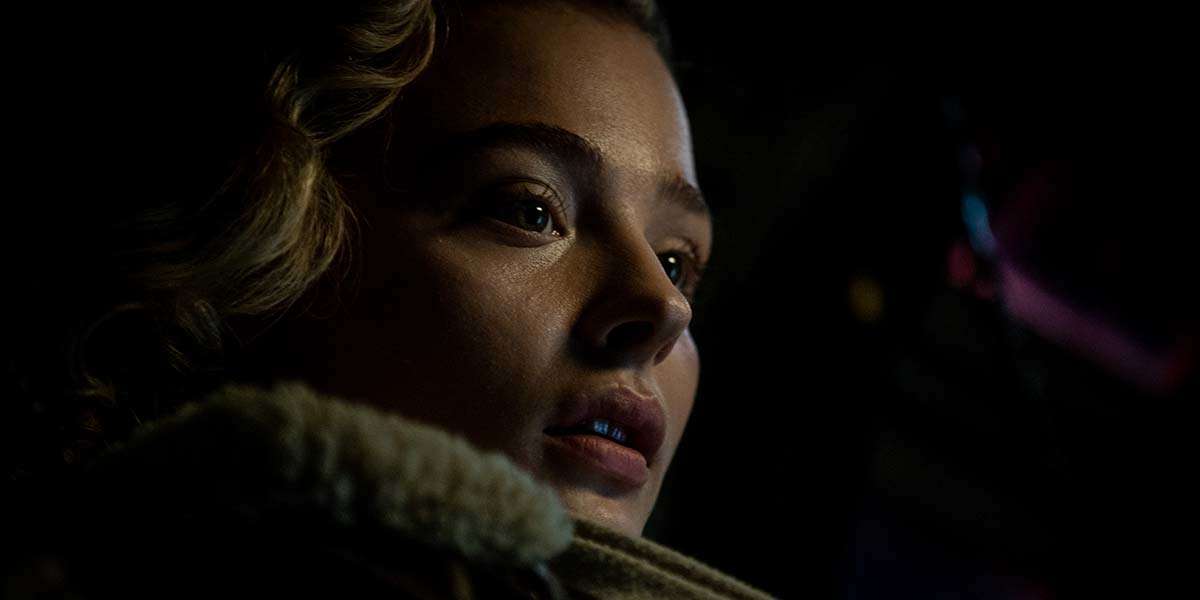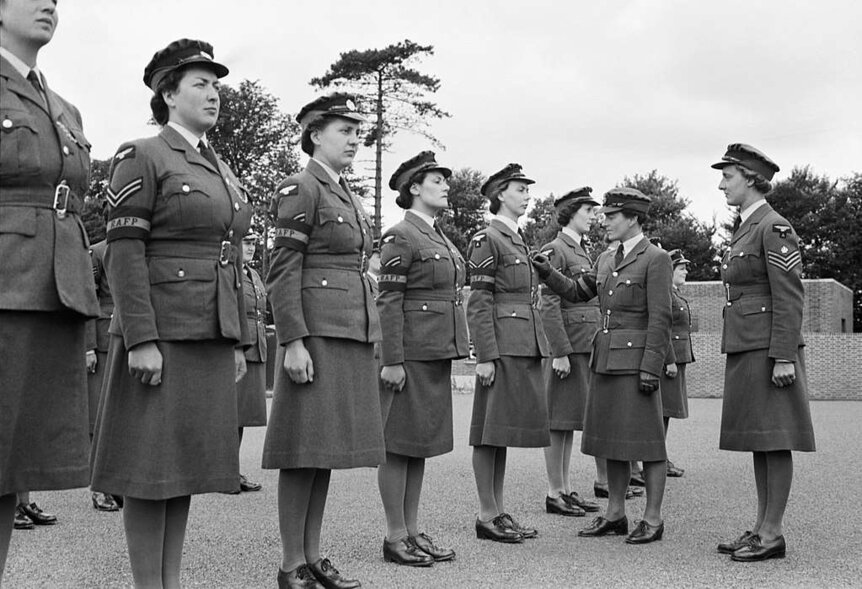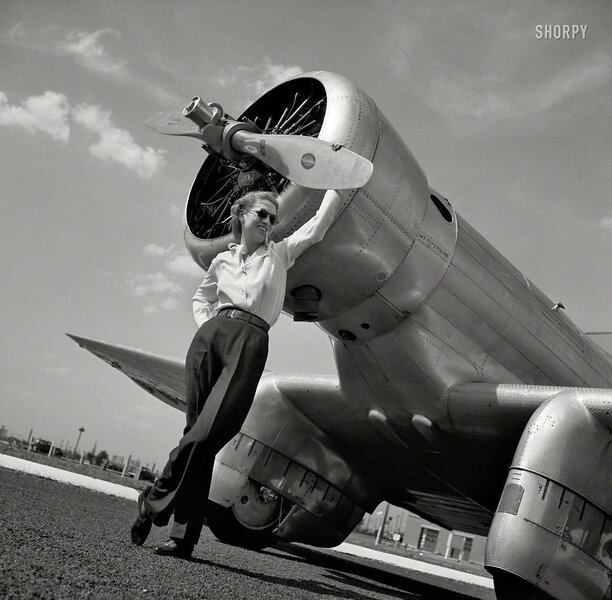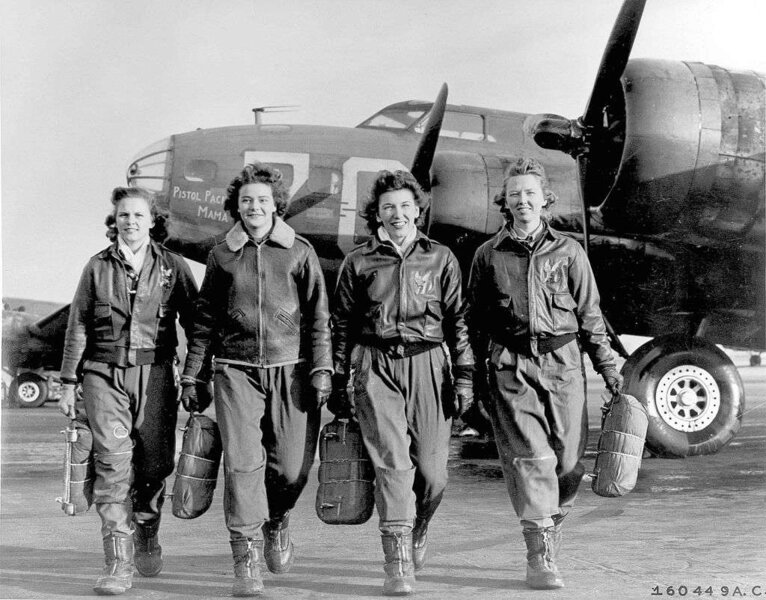Create a free profile to get unlimited access to exclusive videos, sweepstakes, and more!
Shadow in the Cloud and the real badass women of the airforces of World War II

In Shadow in the Cloud, Roseanne Liang's sky-bound horror about a rickety plane's battle against Japanese enemies and a machinery-gnawing gremlin, Chloe Grace Moretz plays a woman pilot with a secret. As she boards the B-17 Flying Fortress, her secret mission and the mysterious package she must guard with her life stir up far less cynicism among the all-male crew than her gender. She is belittled, insulted, and subjected to all manner of verbal sexual harassment. Even after the crew force Moretz's Maude Garrett into the ball turret that hangs precariously from the belly of the plane, they seem to find her mere presence some sort of personal insult. Maude informs them all that she's a pilot herself, an officer in the Women's Auxiliary Air Force, but they view this as a frivolity at best, not the mark of a 'true' airman like themselves. Some of them even doubt that women pilots are real. The Women's Air Auxiliary Force was, indeed, a real division of the British Air Force during the Second World War. There were thousands of women like Maude Garrett in both Britain and America who did their part for the war effort by signing up to serve the skies.
The Women's Auxiliary Air Force (WAAF), whose members were referred to as WAAFs, was established in 1939, the same year the Second World War began. Prior to that, a branch of the Women's Royal Air Force ran from 1918 to 1920, with a focus on training women to be mechanics in order to free up men in those jobs for active service. The group saw much larger than expected enrollment numbers, and women in the WRAF ended up working in key jobs as drivers and mechanics, basically filling in on the wartime duties left behind by men. This would be common practice during World War II, wherein major propaganda and recruitment campaigns encouraged women to work in factories, help produce munition and war supplies, and other forms of manual labor previously considered “men's work.” In the UK alone, over 6 million women were added to the workforce during the war.
What was different about the WAAF was this was a close as British women could get to active service during WWII, aside from nursing positions. While they were never trained to be combat pilots, they were still exposed to many of the same dangers of the warfront as male pilots. They went through the same basic training as the men, and through work in areas such as barrage balloons and code-breaking, they performed crucial duties for the Allied efforts. During this period, women worked under the Air Transport Auxiliary (ATA), which ferried aircraft and supplies between various locations, as well as offered air ambulance work and transportation of soldiers. The women pilots of the ATA were nicknamed the Attagirls and became high-profile figures in the British press. They were seen as the picture-perfect figures to represent a woman's duty during wartime. Throughout the Second World War, there were 166 women pilots in the ATA, which made up about one in eight of their recruits, and they volunteered from around the world. After initially being restricted to piloting only non-combat aircraft, they were eventually permitted to fly almost every plane used by the RAF at the time, including Spitfires. The women of the ATA made history in 1943 when they were awarded equal pay to their male colleagues, the first time the British government ever did so. By comparison, their American counterparts were earning as little as 65% of what the men made.
One ATA pilot, Jacqueline "Jackie" Cochran, took her skills as a racing pilot (and friend of Amelia Earhart) to the ATA then helped to convince Eleanor Roosevelt to start a women's flying division in the Army Air Forces of America. This would eventually become the Women Airforce Service Pilots, or WASPs. The WASPs were formed through the merging of the Women's Flying Training Detachment (WFTD) and the Women's Auxiliary Ferrying Squadron (WAFS), and their mission was similar to that of their British counterparts. They transported military aircraft and cargo, tested planes for active duty, and participated in love target practice. Some of these women pilots were so skilled that they could test new and difficult planes that many of the men were hesitant to try themselves, such as the B-29 Super Fortress. This proved handy for keeping the men in line, as General Henry H. Arnold knew that he could shut up a lot of male grumbling by showing how their female colleagues were ready, willing, and talented enough to do the jobs that they tried to avoid.
While the WASPs were groundbreaking, they still faced immense troubles. Gender discrimination was immense, with some pilots admitting that their male colleagues would refuse to fly with them or having their skills be outright denied. Major Stephenson, the base commander at Camp Davis in North Carolina, told the women that "both they and the planes were expendable." The women stationed there were roadblocked at every opportunity, denied practice time, and, in some cases, became the subject of sabotage when traces of sugar were found in the engines of a WASP crash site. Two WASP women died while on duty at Camp Davis. The initial force of the Women's Army Ferrying Service (WAFS) put the cap on the age of recruits at 35 because 40 was seen as the beginning of menopause and they wanted "to avoid the irrationality of women" when this happened. Some pilots were grounded during their periods because men thought they were too emotional and unreliable during those three or four days.
WASPs also did not qualify for military benefits and had to pay for their own uniforms, transportation, room, and board. General Arnold, among others, pushed hard for a separate air corps headed by a woman colonel that would be ready for active duty, but a massive media pushback opposed the notion. The WASPs were accused of stealing jobs from men, and the prominent journalist Drew Pearson even claimed that General Arnold had been manipulated by the "feminine wiles" of Jackie Cochran. Eventually, the WASP program was kept as a civilian organization. The program eventually ended in 1944, with a House Committee insisting that it was too expensive and unnecessary in the long run. Many women wanted to continue flying but found their efforts hindered. They could not find work as commercial pilots because they were told that the public would not stand for it. Despite being qualified for the space programs of the 1950s and ‘60s, and in many ways being better suited to such work because of their decreased weights, women were essentially shut out of applying because of an unnecessary requirement that all subjects be graduates of military jet piloting test programs.
There are many examples of women-led aviation groups and air force units from around the world. The Soviet Union had an all-woman combat flight unit during the Second World War, nicknamed the Night Witches. The People's Liberation Army Air Force of China included 55 women trainees during the '50s. The Women's Auxiliary Australian Air Force of WW2 enlisted close to 27,000 women to fulfill important duties during this time.
For women in aviation in the 21st century, much has changed but many barriers to entry remain in place. Gender discrimination remains a major issue, and women's participation in the field remains low, with just over 7% of certified civilian pilots (both private and commercial) in the United States being women, according to a 2010 report. The global average for women pilots with commercial airlines is a paltry 3%. The women of the ATA and WASP programs may have made history, but they were barely allowed to progress beyond that once the war ended. As with the thousands of women working in factories and finding independence in the workplace during the early 1940s, they were all but forced back into the home via widespread propaganda campaigns, mass firings, and a societal refusal to acknowledge their important contributions. Just think of how different things would be now had WASPs like Jackie Cochrane, Hazel Ying Lee, Verneda Rodriguez, and Ola Mildred Rexroat been able to transfer their wartime skills onto the burgeoning space programs of the ‘50s. For as long as women are marginalized in such ways, our world will be just that little bit smaller.





























